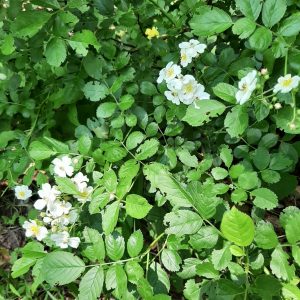Nature at McMaster Adopts a Park

Nature at McMaster Adopts a Park!

In 2023, Nature at McMaster adopted the Berklin Drive Ravine, a green space next to campus, through the City of Hamilton’s Adopt-A-Park Program. Through this program, Nature at McMaster will help to maintain the Berklin Drive Ravine and keep it clean and safe. This will contribute to a more beautiful green space in the McMaster University neighbourhood. City green spaces like Berklin Drive Ravine enhance the natural beauty of the neighbourhood, improve the local environment, reduce flooding risks by absorbing water, provide habitat for wildlife, and maintain healthier air quality. The Berklin Drive Ravine in particular provides a pathway for water to travel down towards Cootes Paradise, providing the marshland with water and reducing flood risk in the McMaster Campus neighbourhood.
The Berklin Drive Ravine features a rich ravine deciduous forest, with mature Tulip, Northern Red Oak, and Hackberry trees. The American Bladdernut, an understory species with uniquely-shaped seed pods, is also present. Additionally, a few large Blue Ash trees and many Blue Ash seedlings have been found in the Ravine. This species is not native to the Hamilton area, but is an at risk species native to small areas in southwestern Ontario and found more prevalently in the midwestern United States. The origin of these parent trees is not known, but they were likely planted at some point. Westdale Creek runs through the ravine, which is a cool water, spring fed creek.

The area is impacted by invasive species, with invasive rose and Japanese Knotweed being of particular concern. The Berklin Drive Ravine is next to RBG lands where the invasive Hemlock Woolly Adelgid is present. Nature at McMaster plans to restore the area through invasive species management and complete natural heritage mapping and inventorying to get a clear picture of what species are present. Once a thorough inventory is completed a proper management and restoration/enhancement plan will be developed for the area. The hope is to protect the existing ecology, while providing opportunities for classes to be able to visit the area for teaching and research.
Nature Stories
